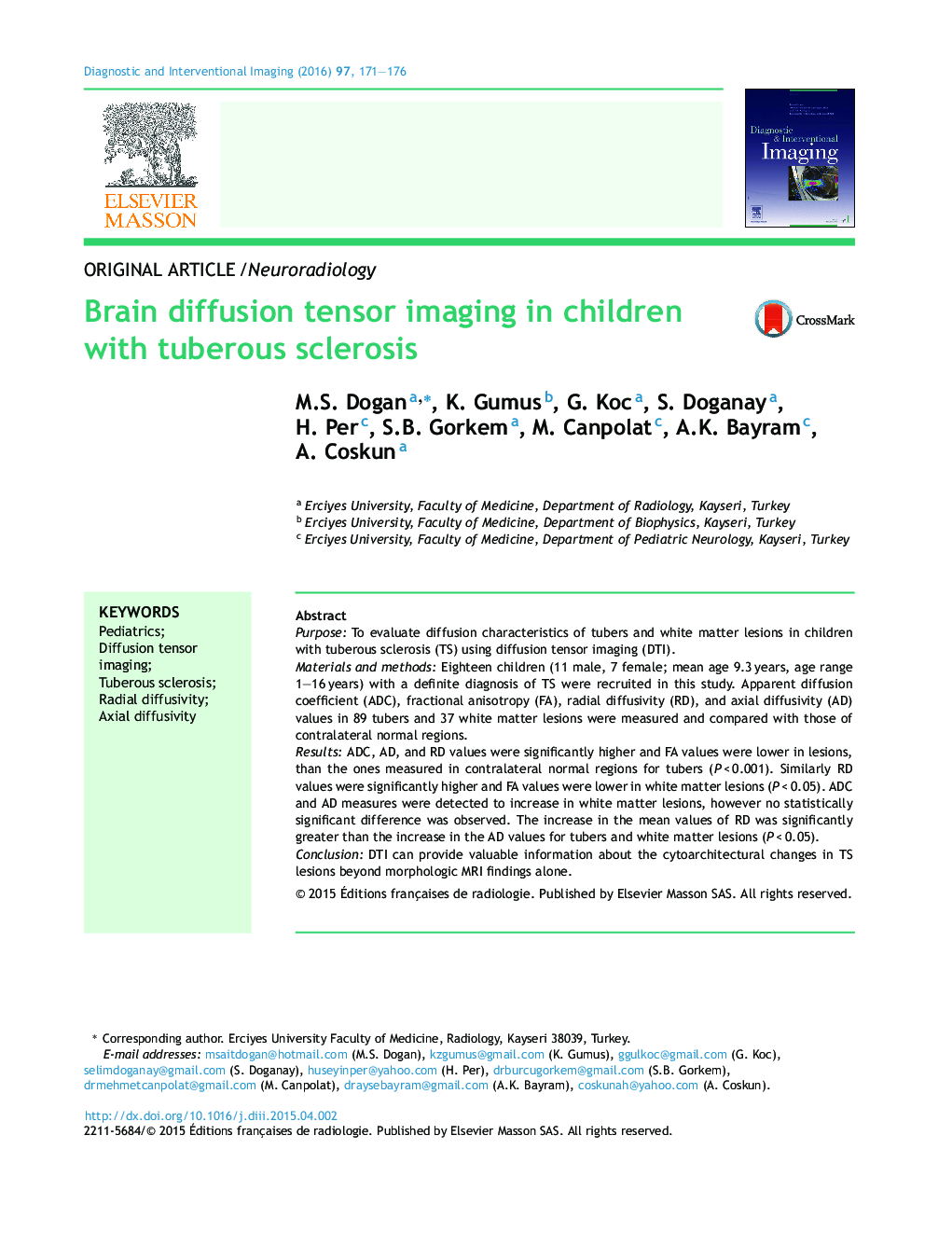| Article ID | Journal | Published Year | Pages | File Type |
|---|---|---|---|---|
| 2733576 | Diagnostic and Interventional Imaging | 2016 | 6 Pages |
PurposeTo evaluate diffusion characteristics of tubers and white matter lesions in children with tuberous sclerosis (TS) using diffusion tensor imaging (DTI).Materials and methodsEighteen children (11 male, 7 female; mean age 9.3 years, age range 1–16 years) with a definite diagnosis of TS were recruited in this study. Apparent diffusion coefficient (ADC), fractional anisotropy (FA), radial diffusivity (RD), and axial diffusivity (AD) values in 89 tubers and 37 white matter lesions were measured and compared with those of contralateral normal regions.ResultsADC, AD, and RD values were significantly higher and FA values were lower in lesions, than the ones measured in contralateral normal regions for tubers (P < 0.001). Similarly RD values were significantly higher and FA values were lower in white matter lesions (P < 0.05). ADC and AD measures were detected to increase in white matter lesions, however no statistically significant difference was observed. The increase in the mean values of RD was significantly greater than the increase in the AD values for tubers and white matter lesions (P < 0.05).ConclusionDTI can provide valuable information about the cytoarchitectural changes in TS lesions beyond morphologic MRI findings alone.
